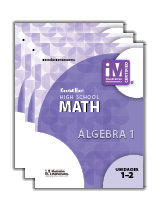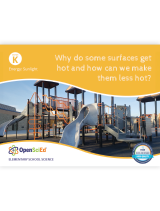Search Listing Name

product:
BSCS Science Tracks: Connecting Science And Literacy: Testing Materials Student Guide
SCIENCE & TECHNOLOGY-In this module, students investigate the materials from which objects are made. They discover that all materials have properties, such as color, hardness, transparency, and absorbency, and that people select a material for a certain purpose according to the properties of the material. Students compare materials in terms of their response to puffs of air and water. They compare structures that are made of different materials and explain why certain structures are made of specific materials.
product:
Project M2 Level K Unit 1: Sizing Up the Lily Pad Space Station: Measuring with the Frogonauts Teacher Guide Package
The Teacher Guide Package includes the Teacher Guide, the 3-Year Teacher Guide eBook License, the Scrapbook, and the Center Book (Level K Only).
Teacher Guide + 3 Year License – It provides lesson planning support in the form of materials lists and unit overviews as well as background information on the geometry, measurement, or number concept being introduced. Mathematical communication, di
product:
OpenSciEd Biology + Earth & Space Unit 4: Natural Selection & Evolution of Populations Spanish Student Edition
OpenSciEd High School addresses all high school NGSS standards. This comprehensive science curriculum empowers students to question, design, investigate, and solve the world around them.
- Phenomenon Based - Centered around exploring phenomena or solving problems
- Driven by Student Questions - Storyline based on students’ questions and ideas
- Grounded in Evidence - Incremental building and revision of ideas based on evidence
- Collaborative - class and teacher figure out ideas together
product:
Illustrative Mathematics: Kindergarten Teacher Guide Set
Illustrative Mathematics K-5 MathTM is an IM Certified product providing trusted, highly rated materials to ensure students thrive in mathematics. Each Illustrative Mathematics lesson has four phases, from pre-unit practice modules to cool downs, focusing students’ attention on definitions, notations, and graphical conventions contributing to the development of real numbers.
The big ideas in kindergarten include: representing and comparing whole numbers, initially with sets of objects; understanding and applying addition and subtraction; and describing shapes

product:
Illustrative Mathematics: Algebra I Spanish Student Edition Set
IM Algebra 1 is a problem-based core curricula rooted in content and practice standards to foster learning and achievement for all. Students learn by doing math, solving problems in mathematical and real-world contexts, and constructing arguments using precise language. Teachers can shift their instruction and facilitate student learning with high-leverage routines that guide them in understanding and making connections between concepts and procedures.
product:
BSCS Science Tracks: Connecting Science And Literacy: Investigating Weather Systems Student Guide
EARTH & SPACE SCIENCE-In this module, students investigate weather by exploring the atmospheric systems and interactions that result in "weather." They begin by exploring the angle of sunlight that hits Earth's surface and relating differential heating to changes in weather conditions around the world. Students explore weather systems by observing, measuring, and recording local conditions. They use tools such as thermometers, rain gauges, and barometers to collect data. With that data, students identify and describe weather patterns a

product:
OpenSciEd Grade K Unit 1: Energy (Sunlight) Teacher Edition
The OpenSciEd elementary science program aligns with all NGSS standards for elementary education.
product:
Project M3: Level 3-4: Unraveling The Mystery of The MoLi Stone: Exploring Place Value and Numeration Student Mathematician's Journal + 1 Year License
The Student Mathematician’s Journal allows students to explore simulated or real-life problems and help them to think, write, and read like mathematicians. It encourages students to reflect on what they have learned in each lesson, think deeply about mathematics, and communicate in writing on worksheets.
In this unit, students explore our numeration system in depth and discover a stone wit
